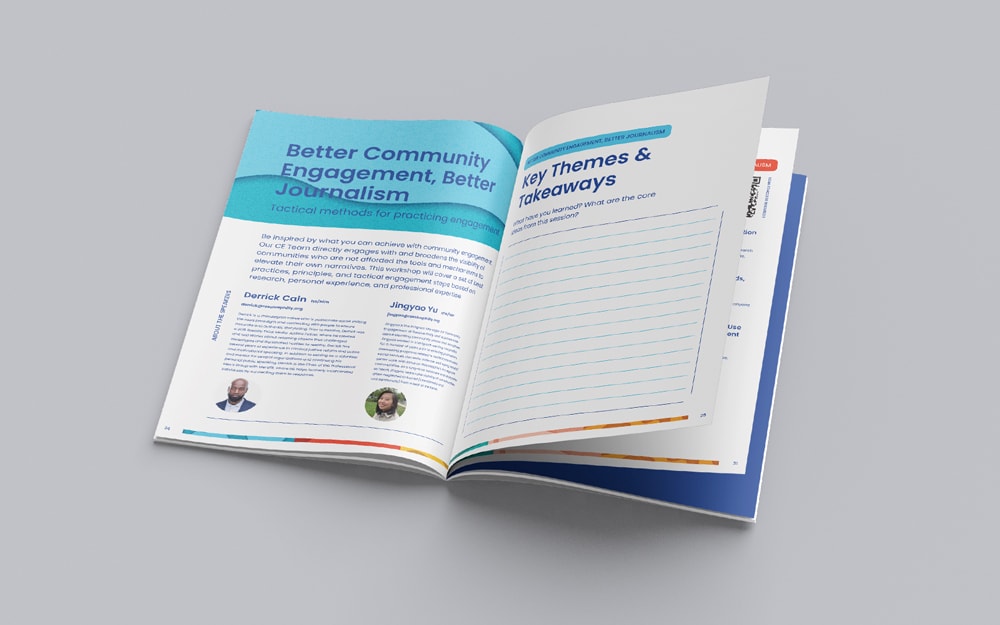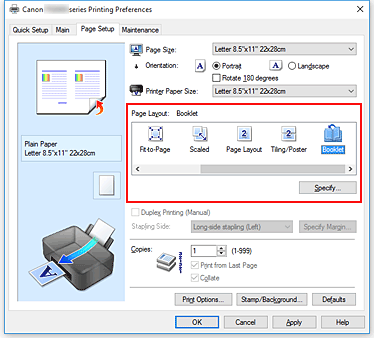Maximizing ROI with Multi-Purpose Booklet Printing Designs
Maximizing ROI with Multi-Purpose Booklet Printing Designs
Blog Article
The Essential Guide to Recognizing Pamphlet Printing Options and Techniques
The process of booklet printing entails numerous considerations that can significantly impact the final item. From choosing the suitable format and size to recognizing the subtleties of binding techniques, each choice plays an essential duty. Additionally, elements such as paper supply and printing strategies additional influence the performance of the brochure. As one navigates these choices, it becomes important to grasp exactly how they interconnect and what that indicates for the general outcome.
Recognizing Brochure Layouts and Sizes
When taking into consideration brochure printing, understanding the numerous styles and sizes offered is important for achieving the preferred presentation. Booklets can be generated in many formats, including saddle-stitched, spiral-bound, and perfect-bound, each offering distinctive advantages. Usual sizes vary from basic letter (8.5 x 11 inches) to smaller sized options like A5 (5.8 x 8.3 inches), enabling versatility based upon content and target audience.Selecting the suitable dimension can influence both the layout and visitor involvement. Larger sizes could match visually driven material, while smaller sized layouts might be more user-friendly and portable. Additionally, the number of pages influences the selection of binding method, as thicker brochures might require stronger bindings. Inevitably, recognizing these elements permits an extra tailored approach, making sure that the end product lines up with the designated message and visual, enhancing the general efficiency of the interaction.
Picking the Right Paper Supply

Binding Approaches: Alternatives and Factors To Consider
When it comes to binding techniques for pamphlets, several options are available, each with unique benefits. Saddle stitch binding offers an economical remedy for thinner pamphlets, while perfect binding strategies offer a more refined search for thicker magazines. Wire-O binding stands out for its toughness and convenience of use, making it perfect for records that require flexibility.
Saddle Stitch Binding
Saddle stitch binding provides a useful and economical remedy for constructing pamphlets, making it a preferred selection among publishers and companies. This binding method involves folding sheets of paper in fifty percent and stapling them along the fold line, developing a cool and well organized appearance. Commonly suitable for pamphlets with a reduced web page count, saddle stitching is suitable for publications, pamphlets, and instructional materials. The simpleness of this technique allows for fast manufacturing and is commonly favored for short runs or promotional items. It is vital to note that saddle stitch binding might not be suitable for thicker booklets, as the back may not hold up under enhanced weight. Generally, it remains a reliable alternative for numerous printing tasks.
Perfect Binding Methods
Perfect binding is a widely made use of technique that gives a refined and professional coating to publications and pamphlets. This technique involves gluing the web pages with each other at the spinal column making use of a strong adhesive, enabling a clean side and the ability to hold a bigger number of pages compared to saddle stitching. Perfect binding is specifically suitable for thicker brochures, such as catalogs and yearly records, where a durable, flat back is preferred. Furthermore, it provides the alternative for a printed cover that can be designed to enhance visual allure. However, factors to consider such as page matter, paper weight, and the planned use the brochure should be taken into consideration, as they can impact durability and general top quality.
Wire-O Binding Choices
Wire-O binding, recognized for its durability and flexibility, supplies an outstanding choice for pamphlets that call for very easy web page turning and an expert look. This binding technique uses a collection of steel loopholes that hold pages securely, allowing them to lie level when open. It is particularly appropriate for discussions, guidebooks, and magazines because of its robust nature. Wire-O binding is available in different colors and diameters, suiting various web page counts and thicknesses. Additionally, it permits the incorporation of tabs and covers, improving the pamphlet's total visual. Considerations for Wire-O binding include the selection of cord shade, the dimension of the loops, and the this page level of modification preferred, every one of which can exceptionally affect the end product's appearance and capability.
Digital vs. Offset Printing: Which Is Best for You?
When selecting a printing method for brochures, recognizing the differences between electronic and offset printing is necessary. Digital printing uses modern innovation to produce high-quality prints promptly and economically, making it suitable for short runs or tasks needing quick turn-around times. It enables modification, supplying the ability to publish on-demand with minimal waste.In contrast, balance out printing is a conventional approach that masters generating large amounts with constant top quality. It includes moving ink from a plate to a rubber blanket, then to the paper, which results in accurate information and dynamic shades. Counter printing generally needs longer arrangement times and is much more cost-efficient for larger volumes.Ultimately, the choice between digital and balance out printing depends on task needs, budget plan, and preferred amount. For small, time-sensitive tasks, digital might be the very best selection, while balanced out might be better for larger, top notch manufacturings.

Designing Your Brochure: Tips and Best Practices
When developing a booklet, mindful attention to layout, font option, and shade use can considerably enhance its performance. A well-structured format overviews the reader's eye, while appropriate typefaces guarantee readability and share the wanted tone. Furthermore, effective use of shade can stimulate feelings and emphasize essential information, making the total layout extra impactful.
Selecting the Right Layout
Just how can one successfully choose the best layout for a pamphlet? It is essential to examine the booklet's objective and target audience. A clean, arranged format boosts readability and interaction. Utilizing a grid system can help in aligning aspects consistently, developing an expert look. Furthermore, including visual power structure via varying sizes and placements of pictures and text can guide the reader's eye and highlight key info. It is also crucial to leave sufficient white space, which prevents overcrowding and enables far better focus. Lastly, examining various designs through mock-ups can give insight into exactly how the layout carries out in real-world situations, guaranteeing that the final product meets both functional and visual requirements.
Selecting Proper Font Styles
A well-chosen font style can greatly enhance the total design of a booklet, matching the format and strengthening the material's message. The option of fonts need to think about readability, especially for body message, as it ensures the information is easily accessible to all visitors. Sans-serif typefaces are usually chosen for electronic formats, while serif typefaces can lend a conventional feel in printed materials. It's advisable to limit font selections to two or 3 to maintain visual comprehensibility. Additionally, font dimension plays a vital role; headings need to be not frustrating however unique, while body message ought to fit for analysis. When choosing fonts, alignment with the brochure's motif and target audience is vital for efficient interaction and aesthetic appeal.
Effective Use of Shade
Color functions as an effective tool in pamphlet design, assisting and forming perceptions reader feelings. It can stimulate sensations of excitement, trust fund, or calmness, depending on the shades chosen. Developers need to take into consideration color theory concepts, making certain that the picked scheme aligns with the pamphlet's message and target audience. Using warm shades like red and orange can create seriousness, while cooler tones like blue and environment-friendly foster tranquility.Additionally, contrast plays a crucial role; complementary shades can enhance readability and aesthetic appeal. Uniformity in color use across pages even more strengthens brand identification and communication. Ultimately, efficient color execution not just records interest but likewise strengthens the pamphlet's purpose, making it a crucial facet of effective design.
Finishing Touches: Coatings and Special Impacts
While several think about the material and format of a pamphlet the most essential elements, the ending up touches, such as layers and special impacts, play an essential function in enhancing its general appeal. Coatings can offer protection and resilience, guaranteeing that the pamphlet endures damage. Matte coatings supply a sophisticated, non-reflective surface, while glossy coverings can make shades show up even more dynamic and eye-catching. Special impacts, like embossing or aluminum foil marking, include a tactile measurement that can develop a memorable impression. These methods can highlight details areas, accentuating important details or creating visual passion. Furthermore, UV layer can supply a high-shine finish that raises the overall look.Together, these finishing touches not just boost the booklet's visual yet additionally communicate professionalism and trust and interest to information, eventually leaving an enduring effect on the visitor.
Price Factors To Consider for Brochure Printing
Comprehending the numerous expense considerations for pamphlet printing is crucial for companies and organizations intending to optimize their spending plans. Trick aspects influencing expenses include you can check here the selection of binding, ink, and paper approaches. Greater top quality materials, such as premium paper or specialized inks, normally raise the overall cost. Additionally, the dimension and web page count of the brochure play a considerable duty; bigger brochures need more resources and time to produce.Another important factor to consider is the printing method, whether digital or countered, as each has its own prices structure and suitability for different amounts. Companies should also consider design expenses, which can differ based on complexity and using specialist solutions. Ultimately, shipping and handling fees can contribute to the overall, particularly for huge orders. By evaluating these components, organizations can make informed choices that straighten with their monetary capabilities while attaining the desired quality in their published products.
Frequently Asked Inquiries
What Are the Environmental Impacts of Brochure Printing?
The ecological effects of pamphlet printing consist of deforestation from paper manufacturing, carbon emissions from transport, and waste generation from discarded products - Booklet Printing. Sustainable methods, such as making use of recycled paper and eco-friendly inks, can alleviate these results
How Can I Guarantee Shade Precision in My Booklet?
To assure shade accuracy in a pamphlet, one must make use of calibrated displays, utilize specialist shade accounts, perform test prints, and select high-grade printing services that provide color matching and proofing choices for finest outcomes.
What Is the Regular Turn-around Time for Pamphlet Printing?
The typical turn-around time for brochure printing varies relying on click to find out more the intricacy and amount - Booklet Printing. Generally, it varies from a couple of days to 2 weeks, affected by elements such as printing techniques and ending up needs
Exist Minimum Order Quantities for Brochure Printing?

Can I Publish Brochures in Numerous Languages?
Printing booklets in multiple languages is possible. Several printing solutions offer alternatives for multilingual or multilingual layouts, enabling reliable communication. Cautious planning warranties that create aspects accommodate various languages without endangering readability or aesthetic appeals. Additionally, elements such as paper stock and printing techniques additional influence the performance of the pamphlet. When considering pamphlet printing, recognizing the numerous formats and sizes offered is essential for accomplishing the preferred discussion. When selecting a printing method for pamphlets, understanding the differences in between digital and counter printing is vital. In addition, the size and web page count of the brochure play a considerable duty; larger brochures require more resources and time to produce.Another important consideration is the printing strategy, whether electronic or balanced out, as each has its own pricing structure and suitability for different amounts. The environmental impacts of brochure printing include logging from paper production, carbon discharges from transport, and waste generation from disposed of products.
Report this page